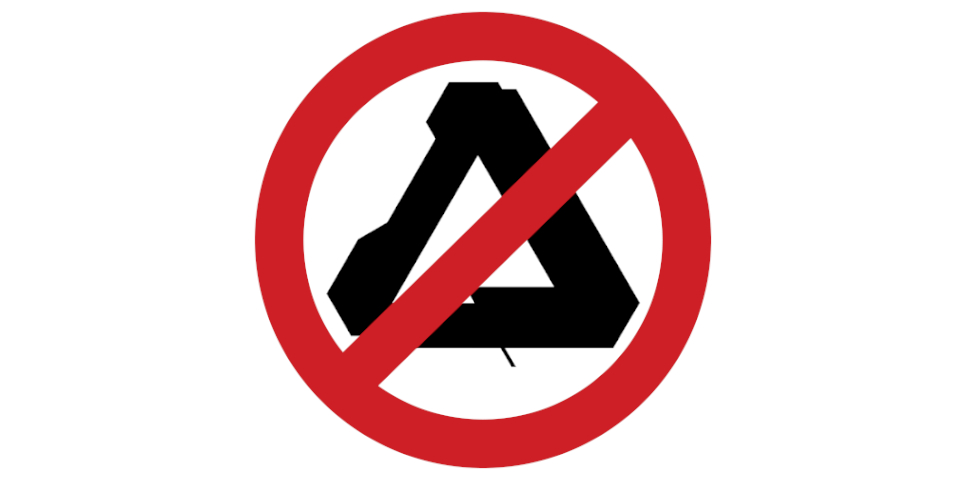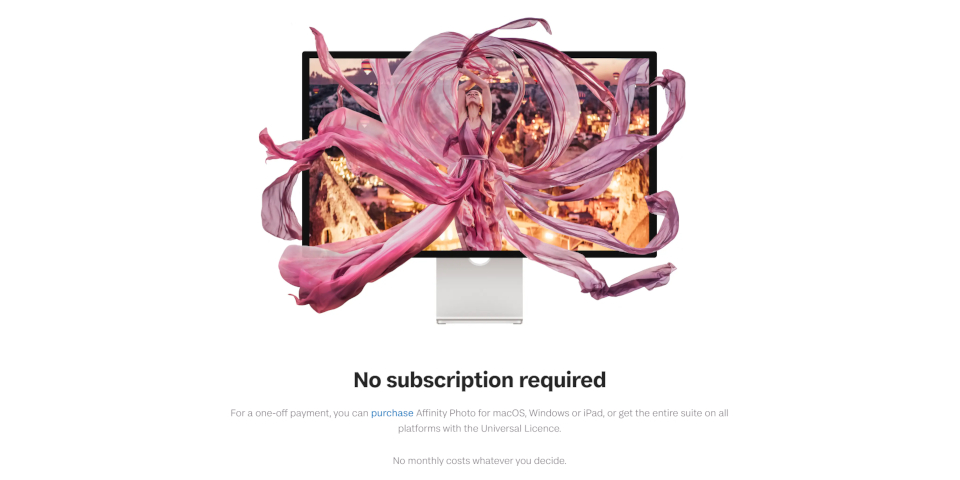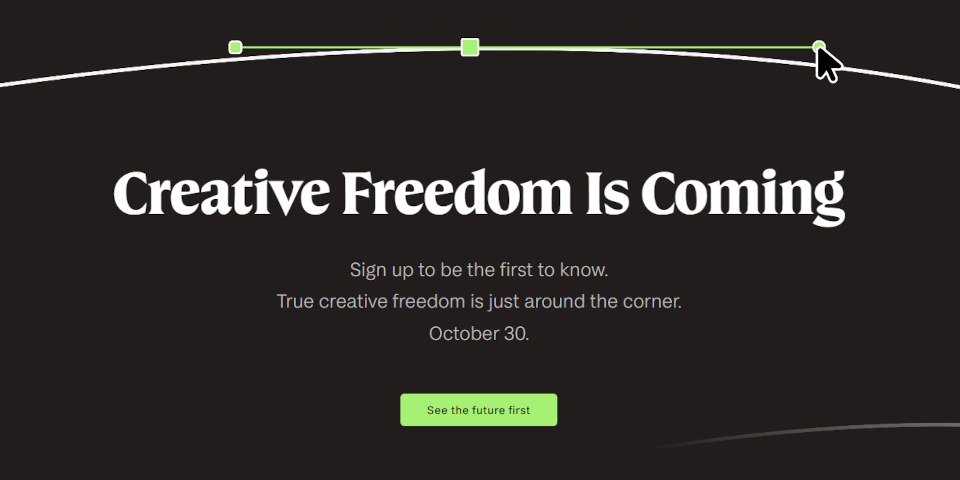Why has Serif stopped selling its Affinity software?

Originally posted on 12 October 2025. Find details of the new Affinity by Canva software here.
Serif has stopped sales of its Affinity products – image-editing app Affinity Photo, vector graphics software Affinity Designer, and page layout tool Affinity Publisher.
The e-store on the Affinity website was disabled at the start of the month, and desktop versions of the products are no longer available in the Microsoft App Store and the Mac App Store.
The iPad editions of the software have been made available for free.
A notice on the homepage of the Affinity website reads, enigmatically, “Creative freedom is coming”, with the date “October 30” beneath it.
The news has sent the Affinity user community into a frenzy of speculation, with many suggesting that Canva – which acquired Serif and the Affinity tools last year – either plans to end perpetual licenses of the software, or to introduce generative AI into the tools, or both.
We believe that one of those is more likely than the other, so we’ve put together our FAQs on what may be announced on 30 October. But first, a quick recap of what has happened so far.
What has Serif done to the Affinity tools?
At the start of October, Serif updated its website, removing the purchase links for Affinity Photo, Affinity Designer and Affinity Publisher, and a few other sections, like its FAQs page.
The Affinity forum has since been put into read-only mode, and most of the videos on the main Affinity YouTube channel have been removed.
Downloads of new trial versions of the software have also been removed, although trial editions that began after 20 September have now been extended until 30 October.
Existing customers can also still download any versions of the software that they have bought.
The changes are apparently temporary: writing on X, Serif said, “We’re making space for what’s next. This short pause lets us transition cleanly without confusion between versions.”

Will Serif end perpetual licenses of the Affinity tools?
One possible reason that Serif has removed perpetual licenses of the Affinity products from sale is that it plans to take the products subscription-only.
In our entirely unscientific survey of social media posts, this is the explanation we saw being suggested most commonly by users – and it’s also the most contentious.
For many artists, one of the key reasons for choosing the Affinity tools over their Adobe counterparts, Photoshop, Illustrator and InDesign, was that they didn’t require a subscription.
It’s something that Serif made a lot of marketing capital out of, as you can see from the screenshot above, which shows the Affinity website earlier this year.
That the tools might go subscription-only is something that users have feared since Canva – which uses a subscription model for its products – acquired Serif last year.
At the time, the companies issued a set of four pledges to users, the first of which was that “perpetual licenses will always be offered, and we will always price Affinity fairly and affordably”.
At the time of writing, even though all of the old videos have been deleted from the Affinity YouTube channel, that pledge still remains on it.
Totally understand the anxiety, but that's absolutely not the plan. It's a bit cryptic right now, but it'll all make sense on Oct 30! I genuinely think you're going to be very pleased.
— Affinity (@Affinity) October 9, 2025
Serif is also now stating fairly clearly on social media that it isn’t moving to a subscription model.
At the start of the week, the company was stonewalling enquires about whether it was going subscription-only with a stock response on X that “fairness and freedom are what Affinity was built on” – a non-denial that only served to fuel further speculation.
However, more recently, it has switched to saying that subscription is “not something you need to worry about”, and most recently, that it is “absolutely not the plan”.
We truly do have something exciting in store! I hear you on the AI piece. Affinity believes in choice. You’ll see what we mean on Oct 30.
— Affinity (@Affinity) October 9, 2025
Will Serif introduce generative AI into the Affinity products?
Another common piece of speculation is that Serif plans to introduce generative AI capabilities into the Affinity tools, in the way that Adobe has begun to do with its desktop software.
Canva has a lot of AI features, including equivalents to Adobe’s Generative Fill and Generative Expand, and generative AI text-to-image and text-to-video capabilities.
While introducing AI into the Affinity tools probably wouldn’t be a deal-breaker for as many users as ending perpetual licenses, it’s still a divisive issue for many artists.
Here, Serif has been much less categorical in its responses on social media, so far not denying that it plans to introduce AI, only noting that “Affinity believes in choice”.
What a code breaker! Love to see it 🤯
— Affinity (@Affinity) October 9, 2025
Is Serif about to release V3 of the Affinity tools?
Another possible explanation for removing the old versions of the Affinity tools from sale is simply that Serif is about to release version 3 of the applications.
This seems entirely plausible: it’s almost three years since version 2 was released, so while it would be a shorter update cycle than version 1, it wouldn’t be unreasonably short.
Serif also seems to be planning a change of branding.
On X, one enterprising user has pieced together the teaser images that the company has posted on its different social media channels into what seems to be a new Affinity logo.
However, it isn’t clear why releasing new versions of the applications would mean taking the old ones off sale a month early.
While the end of a release cycle also means the end of free upgrades to the current versions, last time round, Serif just updated the Affinity website on the day of release.
That suggests that if this is the run-up to a version 3 release, it could involve a bigger structural change to the Affinity tools: for example, unifying them into a new product, or making some or all of the functionality available online, as Canva does with its Visual Suite of design tools.

Is this a marketing stunt?
It’s also possible that Serif has taken the Affinity tools off sale – or at least, done so early – to build anticipation for the announcement on 30 October.
An email from customer support posted on Discord reads, in part: “Due to the nature of the campaign we’re running, I can’t answer your final question [about a subscription model] directly”.
If it is a marketing campaign, it’s clearly working: the Affinity tools have had a lot of attention over the past week, both on tech news websites and on social media.
However, it isn’t a risk-free strategy – on X, one designer describes it as “anxiety marketing” – and a month is a long time to leave your users fearing the worst.
Serif clearly believes that its users will be pleased with the changes, and that promoting them in this way is worth the risk – but we guess that we’ll all have to wait for 30 October to find out.
Have your say on this story by following CG Channel on Facebook, Instagram and X (formerly Twitter). As well as being able to comment on stories, followers of our social media accounts can see videos we don’t post on the site itself, including making-ofs for the latest VFX movies, animations, games cinematics and motion graphics projects.
